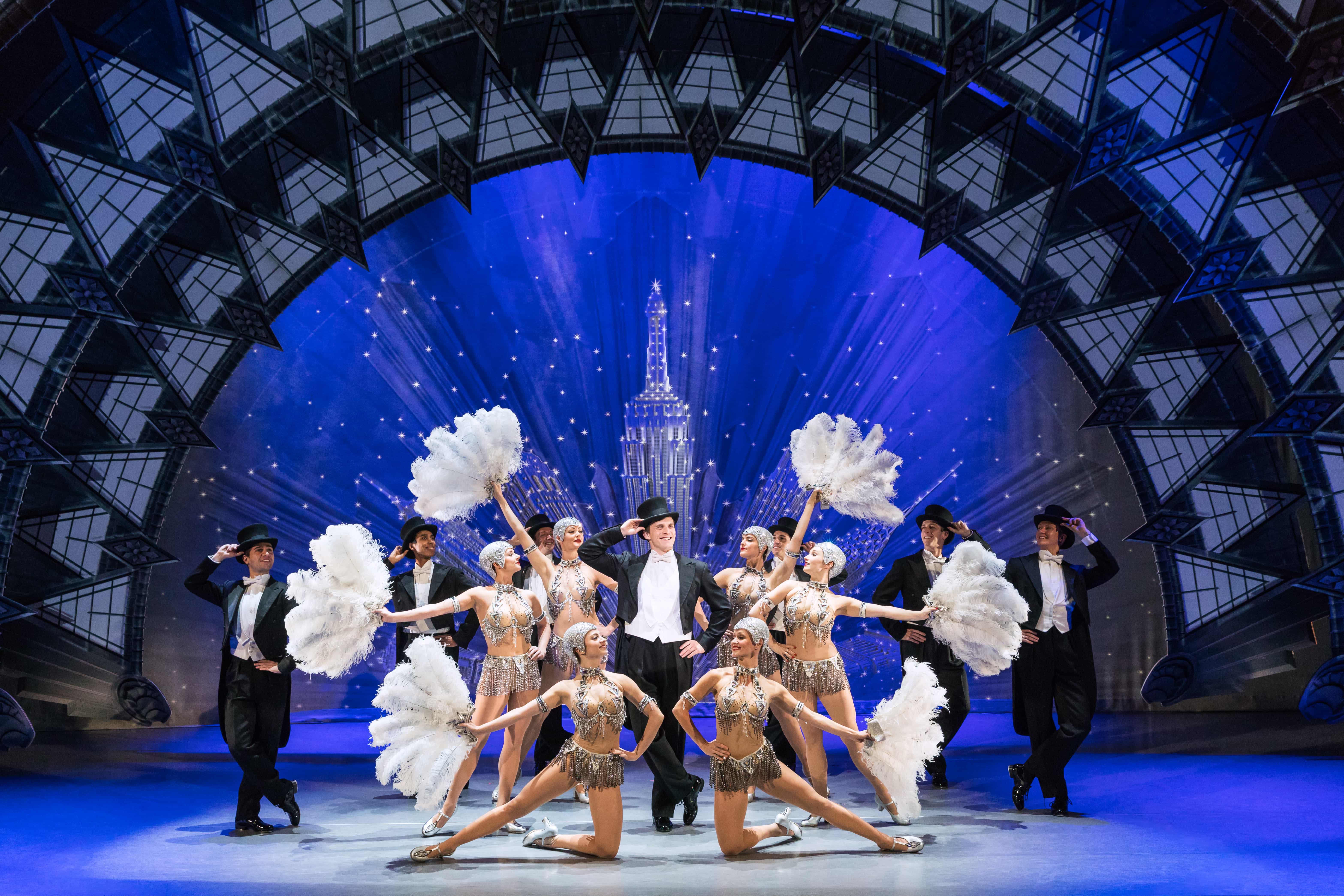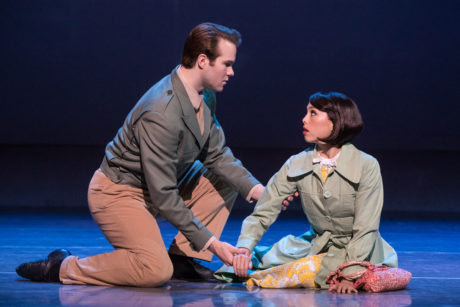Glistening The Kennedy Center’s lush Opera House with feted Hollywood glitz and glamour, the national tour of the 2015 multi-Tony-winning musical, An American in Paris, debuted Tuesday for a month-long engagement, featuring Bethesda native, Allison Walsh.

Adapted and modernized, while still retaining the splendor of the iconic multiple Oscar-winning 1951 Vincente Minelli film, which won the Academy Award for best picture, starring dance legends Gene Kelly and Leslie Caron, the musical is a love story about art, friendship, and reawakening in Post-World War II Paris.
As fans of the movie may recall, the narrative centers on Jerry Mulligan (exuberantly commanded by McGee Maddox), an aspiring artist and American soldier who, after the liberation of France, remains in the City of Lights to pursue a painting career when he encounters an intriguingly beautiful French ballet dancer, Lise Dassin (a demure but alluring Allison Walsh), who captures his heart. Unbeknownst to Jerry, a strident American art dealer, Milo Davenport (superbly portrayed by Kirsten Scott) has her sights on him; while wealthy Henri Baurel (an affable Ben Michael) and composer Adam Hochberg (a tremendous Matthew Scott) vie for Lise’s affection.
Exquisitely bridging the gap between ballet and Broadway, punctuated with a stunning score of George and Ira Gershwin’s masterful standards, Director and Choreographer Christopher Wheeldon (who, not only created all of the intricate dance arrangements, but all of the versatile stage and prop changes innovatively brought to life by Bob Crowley’s set and costumes, accented with Natasha Katz’s light designs and 59 Productions’ projection designs) seamlessly blends contemporary and classical styles with luminous elegance and flair.

Imaginatively set against breathtaking backdrops of continually varied scenes and ingenious projections, such as the clouds floating above the city skyline and the stars flickering in the reflection of the Seine, each member of the extraordinary ensemble ardently sing and dance, while simultaneously twirling design pieces on and off the stage with finesse.
Of the show’s most memorable 17-song set catalog, which includes the timeless, “They Can’t Take That Away From Me” (gorgeously executed by Maddox, Michael and Scott), “I Got Rhythm” and “S’Wonderful”, was Kirsten and Matthew Scott’s (who are actually married in real life) poignant duet in Act II of “Who Cares?”
Heightened with the best and most infectious of 20th Century American music, solidified with a stunning sequence of avant-garde dance numbers, expertly delivered by an immensely talented cast and exceptional orchestra, An American in Paris makes for an upliftingly sublime escape.
Running Time: Approximately two hours and 30 minutes, including a 20-minute intermission.
An American in Paris plays through January 7, 2018, at The Kennedy Center’s Opera House Theater – 2700 F Street, in Washington, DC. For tickets, call (202) 467-4600, or purchase them online.





A heirarchy of factors make up any play, including a musical play. First must come a good, intelligent script with believable, sympathetic characters, a sensible plot with conflicts and rewards, and genuine-for-the-period dialogue. Only then come music, staging, singing, dancing, set design and lighting. An American In Paris has world class songs (and a couple of good singers), world class dancing, and world class set design. How much better it would be, though, if there were that first-class script to start with. Instead of merely enjoying the dancing and scenery, we would really be emotionally involved.
An American In Paris is, alas, part of a modern trend away from intelligent scripts. To give one example, the heroine is egregiously provided with three ancillary reasons not to marry a man she doesn’t love, when that lack of love should be enough. For Pete’s sake, if the writer couldn’t come up with a good script, why didn’t he use the original screenplay?
Audiences should go anyway, and pretend they are watching a full-length ballet.